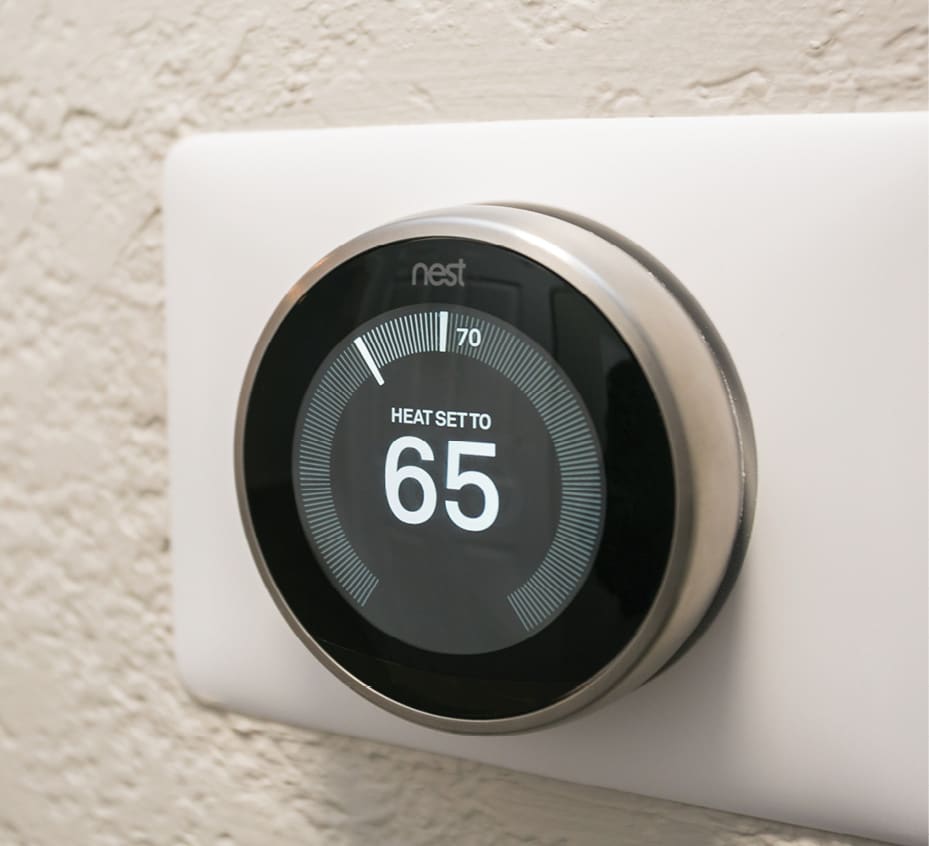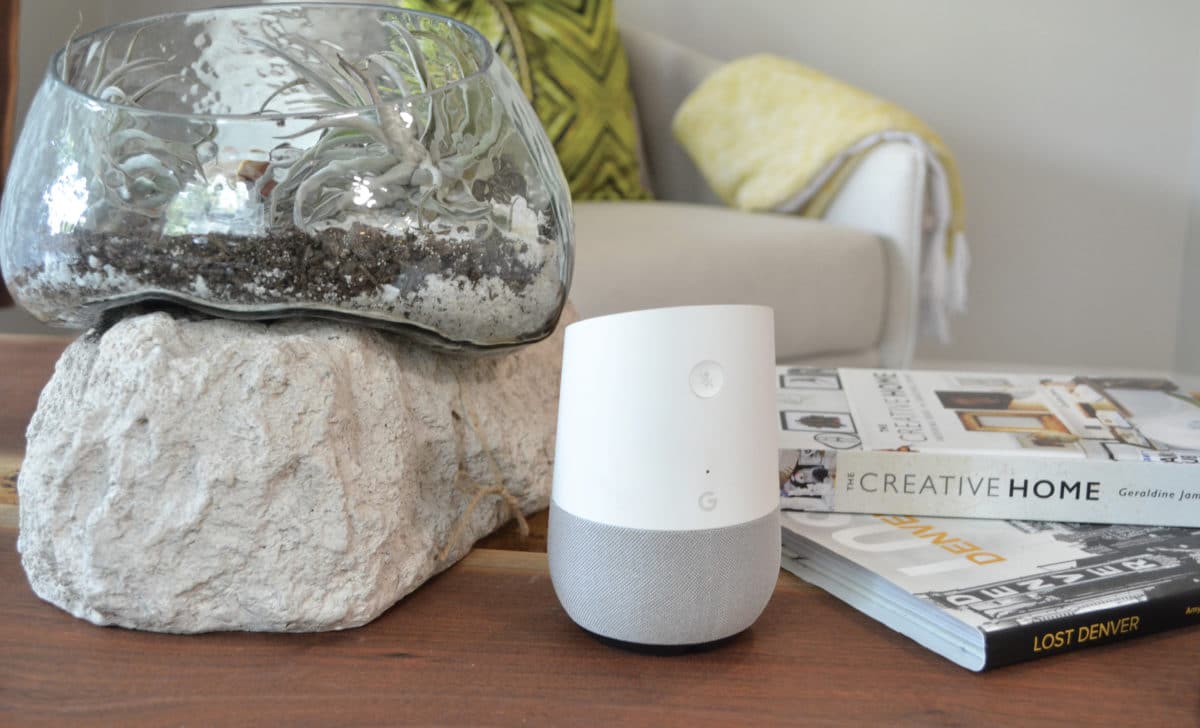
Pensam Residential is taking its rental units to the next level with Nest. [Photo: Courtesy of Nest]
Renters tend to be excluded from the latest advances in green design. Homeowners can plot their solar panel project, and the hospitality industry is always racing to one-up the competition with a new living wall or efficient toilet—but sign the lease on a rental and what do you get? “Typically, you rent this super standard box,” says Meggan Shaw-Butler, vice president of asset management at Pensam Residential, a Miami-based asset management firm with 15,000 rental units spread across 10 states.
Pensam is trying to change that by putting their residents at the forefront of the smart home movement. They’ve installed the Wi-Fi enabled Nest Learning Thermostats, which adjust to tenants’ routines to reduce energy consumption, at Pensam properties across the country. “We’ve become enamored by the idea that everyone should have access to cutting-edge technology and products like the Nest Thermostat,” Shaw-Butler says. “So they’re able to enjoy very customized but efficient and impactful home solutions.”
Pensam is in the business of adding value to its portfolio of multi-family dwellings; they buy up Class B properties and transform them into Class A properties. When the company started in 2009, they did that using classic upgrade tools—a granite countertop here, some stainless steel appliances there. But in 2015, Pensam found itself with an apartment complex in Austin, Texas, that happened to get super-fast gigabit-speed internet thanks to Google Fiber. The team at Pensam started exploring high-tech products from Google’s parent company, Alphabet, and stumbled onto Nest.
“We discovered that Nest could give us an opportunity to meaningfully differentiate ourselves from our competitors,” Shaw-Butler says. “Pensam likes to try different things, throw stuff at the wall and see what sticks. We thought this could be very unique, very different—and it could give people an opportunity to have much more control over their home, which is not the norm in the rental market.”

Photo courtesy of Nest
They started with a trial period, installing Nest Thermostats in just five apartments each month as units turned over, then sat back to look for signs telling them whether or not it was a good idea. The answer was unequivocal. “Demand was astronomical,” Shaw-Butler says. “Then we started adding them to every single unit possible.” By the end of the year, all 184 units in that Austin complex had Nest Thermostats. Today, there are nearly 1,600 Nest Thermostats installed at Pensam properties across the country.
Apple alums Tony Fadell and Matt Rogers started Nest in 2010 out of a Palo Alto garage. Their idea was to take the lowly thermostat—omnipresent in American homes but woefully energy inefficient and underappreciated—and transform it into something tech-forward and sexy. “We focus on simple, beautiful, delightful hardware and all the software, services, and apps that enable those products to work so elegantly,” says Gene LaNois, general manager of the Professional Channel at Nest. “Our mission revolves around creating a thoughtful home that takes care of the people inside it and the world around it.”
Nest Thermostats can be connected to the internet and controlled from anywhere using your smartphone, but the idea is that after a week or so, users hardly have to control them at all. Instead, Nest’s software uses machine learning to understand your preferences and adjust accordingly. It uses motion sensors and can even use your phone’s GPS to determine if anybody is home, keeps track of the weather using the internet, and learns how long it takes for your home to be cooled or heated. “It’s always optimizing itself to meet your comfort demands and run the most efficient cycles,” LaNois says. On average, Nest has saved users 10-12% on heating and 15% on cooling, thanks to the smarts packed into Nest Thermostats.

Photo courtesy of Nest
The result is a device that’s easier to use and much more charming than a traditional thermostat. Before coming to Nest, LaNois worked for a leading thermostat manufacturer “and never once did I run into a scenario where somebody said, ‘Hey, for my mom’s birthday, I’d love to get her one of your thermostats,’” he says. But now that he works at Nest? “Literally that happens every year.” Shaw-Butler says when prospective tenants step into a rental unit, they’re transfixed by the little glowing circle on the wall.
In addition to thermostats, Nest offers Wi-Fi security cameras and the Nest Protect smoke and carbon monoxide alarm. And through the Works With Nest program, Nest devices are compatible with more than 170 products from other providers, from Google Home to Whirlpool appliances to Sleep Number beds. Because the Nest Thermostat can tell whether a user is home, it’s uniquely positioned to act as conductor for a symphony of smart home tech. Connect your Phillips Hue lightbulbs to your Nest Thermostat, and they’ll turn off when the Thermostat notices you’ve left the house. Link up Nest and the Whirlpool mobile app, and Nest will help your dryer optimize its cycle to reduce energy consumption (no need to waste energy rushing to dry that load of laundry on high when nobody’s home anyway).

Photo courtesy of Nest
At Pensam, the team is already offering Google Home, the voice-controlled speaker that acts as a hub for Google’s Assistant in some units and is exploring options for connected lights and door locks. They’ve also seen residents add products on their own. “We kind of refer to the Nest Thermostat as the center of our connected homes,” Shaw-Butler says. “We love the idea that you can come in and tweak and adjust and expand as far as you want to really make it a home that works for you.” Residents have exclusive control over their thermostats, so Pensam’s tenants don’t have to worry about their landlords or previous tenants adjusting the temperature.
As owned homes become increasingly connected, tenants are sure to expect the same technology in their rentals. Shaw-Butler hopes other rental properties will look to Pensam as a model. It would take the edge off Pensam’s competitive advantage, sure, but energy savings across thousands of apartments could add up into something huge. “It sounds a little idealistic, but if operators as a whole can come together to try to improve quality of living for people and impact our environment in a positive way, then why not?” she says. “This is an area where we have an opportunity to make a big impact.”


